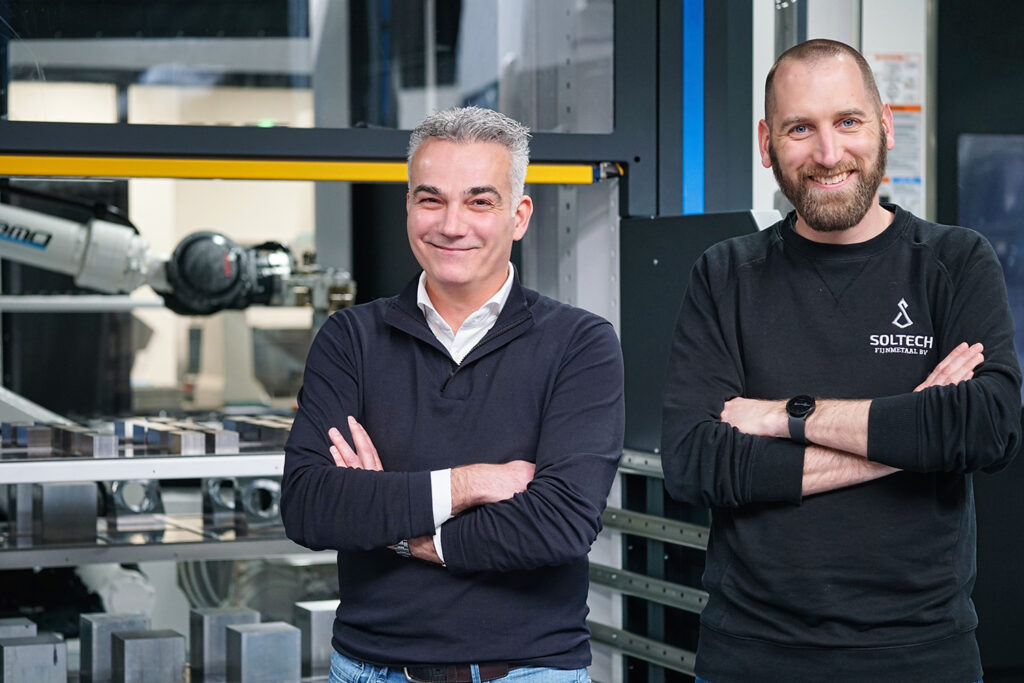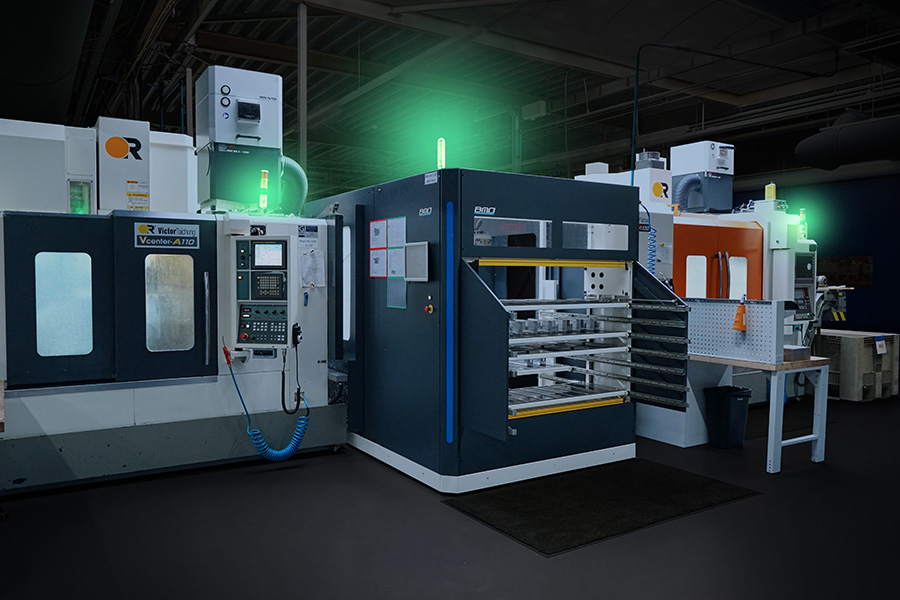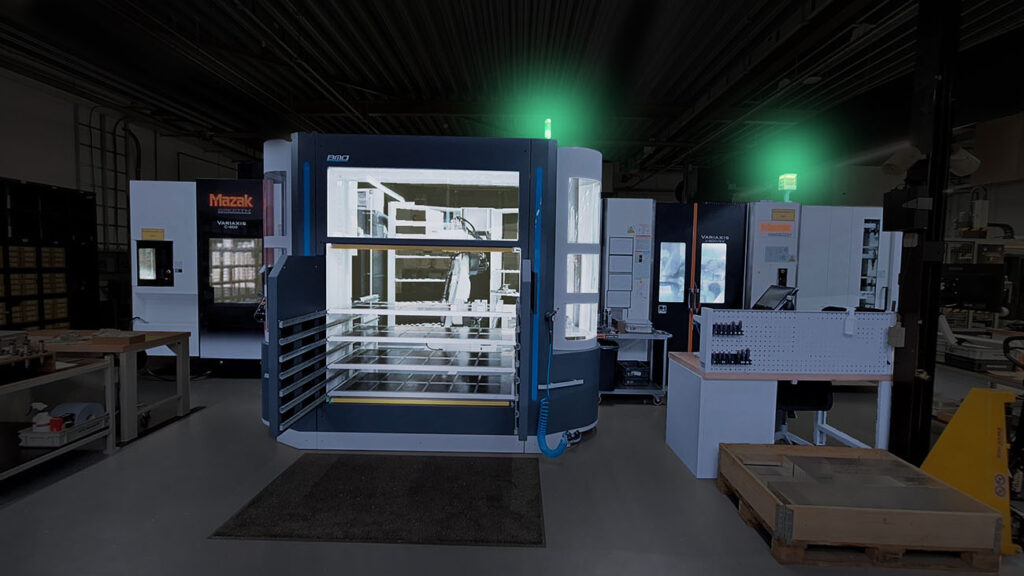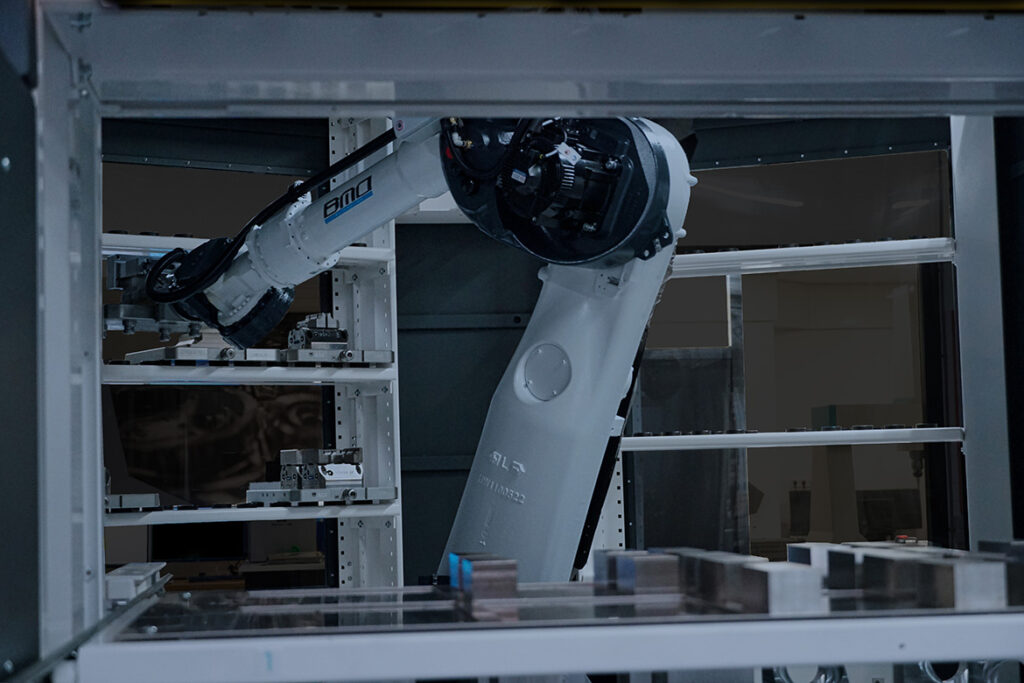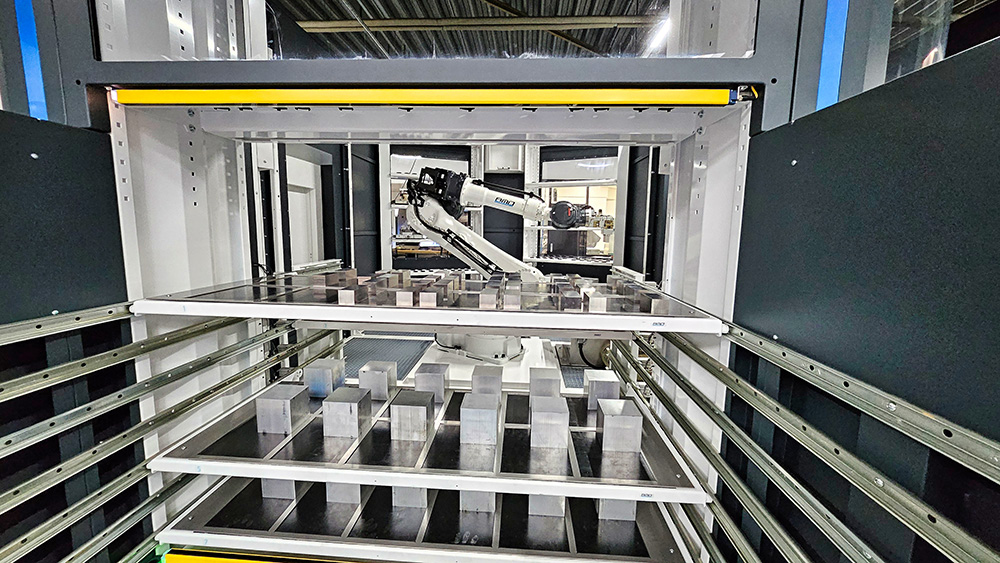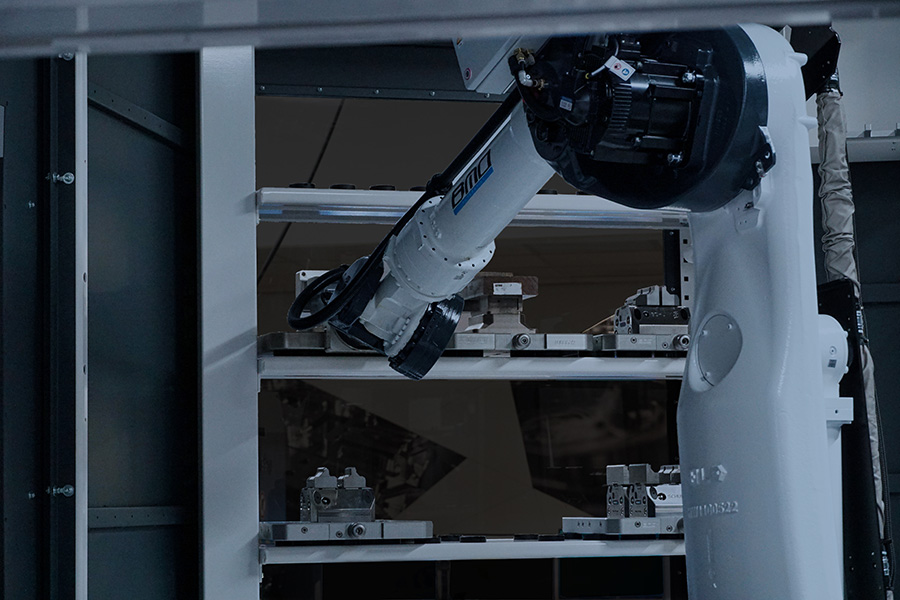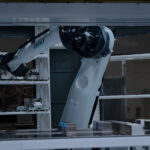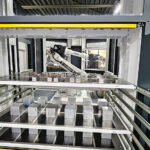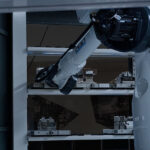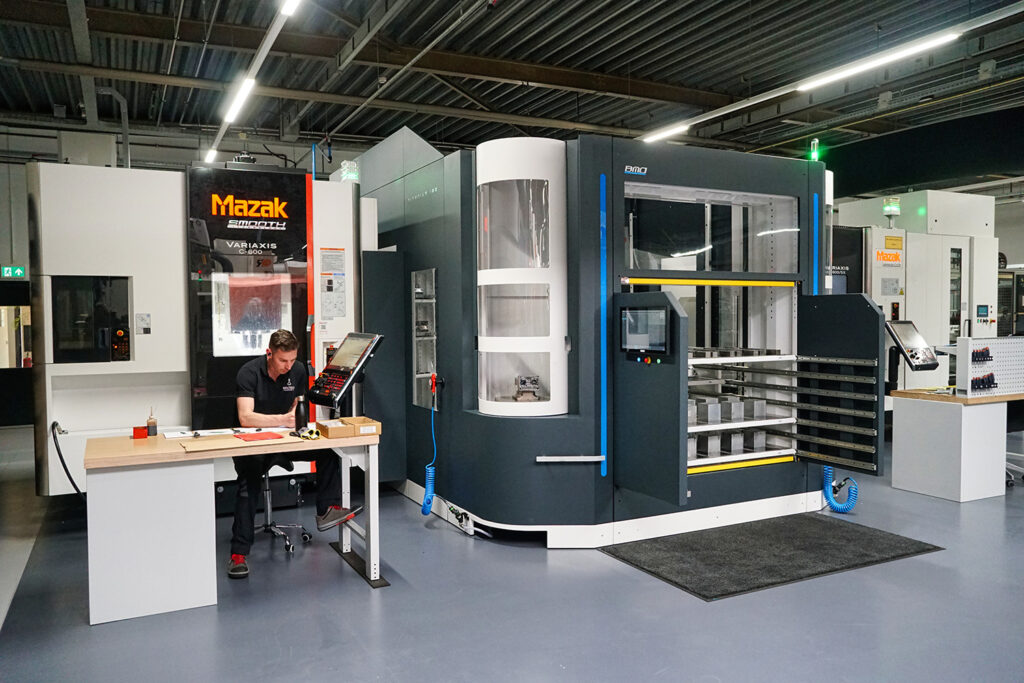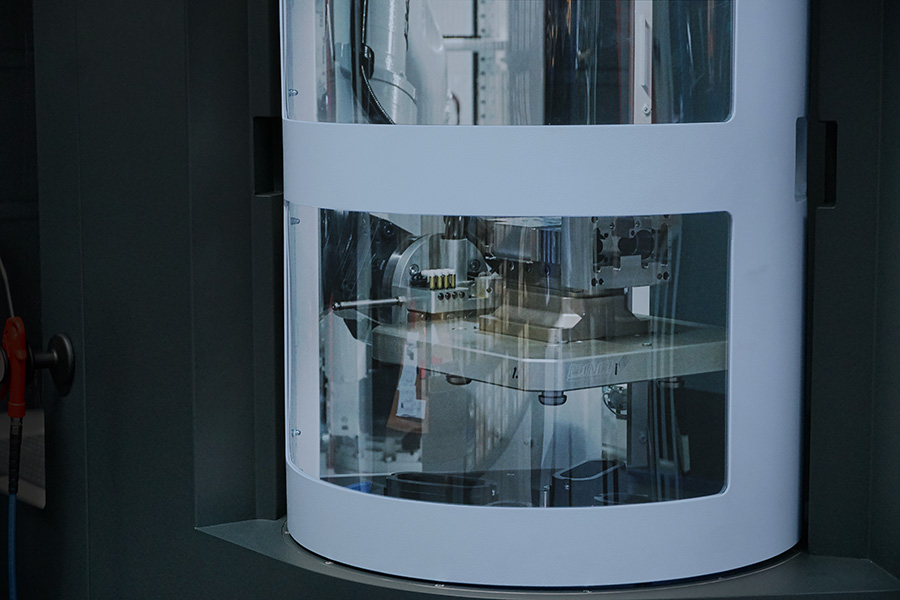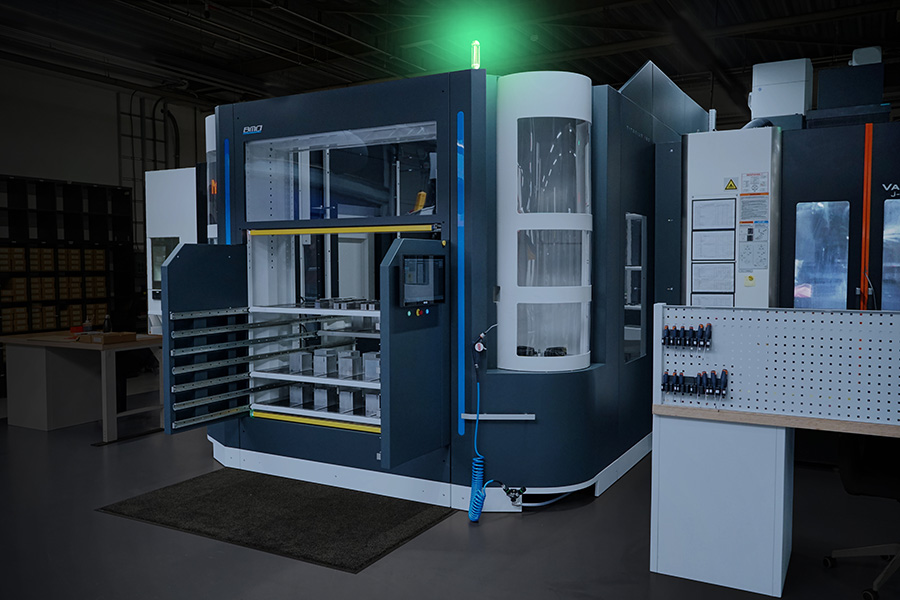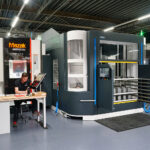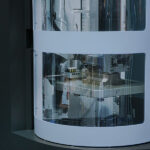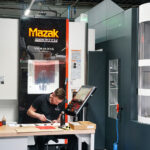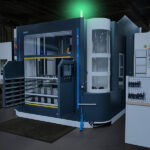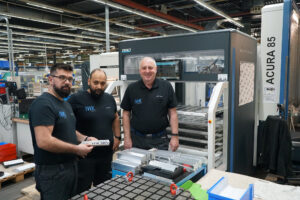Flexible automation of precision milling
Soltech Fijnmetaal is evolving into a supplier of high-quality, complex parts. The company has successfully stabilised its processes to such an extent that even complex precision components can be machined unmanned. To achieve this, the precision metalworking company uses solutions from BMO Automation.
A lot has changed since Maurice Brands took over Soltech Fijnmetaal in 2011. ‘We used to be a typical jobber, but we are increasingly becoming a partner for our customers. We still produce precision mechanical components, but now we also provide a complete package, including manufacturability recommendations, a measurement report, grade 4 and grade 2 cleaning, and, if necessary, assembly,’ he explains, summarising their progress. Soltech Fijnmetaal’s customers are from a range of market segments: from semicon and medical to airport technology, warehousing and agro. In some cases the company supplies directly to small to large OEMs, while in others Soltech Fijnmetaal serves as a tier 2 or tier 3 supplier.
Digitisation and automation
Since Maurice Brands took over the company, digitisation and automation have been a common thread in every decision pertaining to development and investment. ‘We want to work smarter,’ adds Johan Houben (technical advisor). Soltech Fijnmetaal is a frontrunner when it comes to digital communication with customers and suppliers through the Smart Connected Supplier Network (SCSN), which automatically exchanges order information between the company’s ERP systems and those of customers and suppliers.
Maurice Brands explains, ‘For some customers, an order may comprise up to 100 order lines, which are now received electronically via our ERP system.” Previously, this process required manual entry, line by line. Through the same SCSN link, Soltech also receives daily updated prices from its material suppliers so that quotations can be sent to customers quickly. In the past, an RFQ had to be sent to the material supplier for each piece of material. ‘We are spearheading the initiative, guiding our customers through these transitions to establish a seamless digital connection between all stakeholders.’
Personnel doubled, turnover increased fivefold
Stepping into the fabrication area, you immediately see the BMO Titanium 180 robot cell with the two Mazak machines. On the other side of the aisle is the BMO Platinum 50, to which a Victor A110 and now also a VCenter A130 from the same manufacturer are connected. The Mazak cell and the Victor cell, as the millers call them. By robotising, digitising and automating, Soltech Fijnmetaal has increased turnover fivefold since the acquisition, while the number of employees has only doubled. BMO Automation’s first robot cell was a Platinum 50, which has been running smoothly for several years now. A second BMO was installed early this year: a Titanium 180 with pallet handling and product handling. Johan Houben says, ‘We had been aspiring to grow further for years, but the possibilities at our previous location were limited.’ After the decision to relocate to the new premises in Valkenswaard in 2021, fresh investments in CNC machines and robotics became feasible once again. In early 2023, the acquisition of a Mazak Variaxis C600 5-axis machining centre prompted the decision to integrate it into a new robotic cell alongside the previously acquired Mazak Variaxis J600. Based on the positive track record with BMO, the Titanium 180 emerged as the preferred choice for the new robot. Pairing the existing Mazak J600 with the new robot cell freed up space at the Platinum 50. Subsequently, a decision was taken to collaborate with BMO to integrate the standalone Victor A130 5-axis machine with this robot. This tailored integration of an unprepared machine was executed entirely by BMO in partnership with Soltech, resulting in the establishment of two 5-axis cells.
The first self-adjusting gripper
At the time, Soltech Fijnmetaal was the first Dutch company to start using BMO’s self-adjusting gripper in the Platinum 50. Maurice Brands explains, ‘At that time, the automation market was strongly focused on pallet handling, but that was not our vision. We make ten pieces of one product and then thirty pieces of another. BMO offered product handling, and the versatility of the robot was exactly what we were looking for.’ He recalls that the Platinum 50 cell ran for 48 hours of production during the first weekend. The conversion of both cells to the new machine layout went smoothly, as both Mazak machines were factory-prepared for automation.
‘You enter an evolution when you start automating. The BMO Titanium 180 is yet another step in this process.’
Johan Houben, Soltech Fijnmetaal
Fixture changeover
The new Titanium 180 robot is suitable for both product and pallet handling. This means that the robot can change both workpieces in the vices and the vices themselves, in addition to product handling that collects materials from a drawer and places the workpieces back in it. Johan Houben says, ‘This means we can now machine large products unmanned. Or products with high accuracies that we can take to the measuring room in the vice. We are a company that needs product handling today, pallet handling tomorrow. With the large cell, we can now do both.’ Maurice Brands calls this the best of both worlds. ‘You have to be as flexible as possible, which is why we wanted both options.’ This cell is ready for the next steps Soltech Fijnmetaal plans to take. For example, rinsing the products with demineralised water and then blowing them dry to prevent staining, all while still in the cell. Or monitoring tool life via the BMO cell’s software to further improve the unmanned process. ‘You enter an evolution when you start automating. The BMO Titanium 180 is yet another step in this process. The next step will be including the robot in the CAM programming. We want as little hands-on on the machine as possible,’ says Johan Houben.
Relieving the skilled workers of repetitive tasks
By investing in the BMO Titanium 180 robot cell with the new 5-axis Mazak C600 milling machine, Soltech has significantly increased its capacity for unmanned production. It wants to relieve the scarce skilled workers of repetitive tasks as much as possible. For example, all CNC machines are connected to a cooling lubricant management system with dual loops, which allows the concentration to be adjusted for each machine. The company also wants to compile machining knowledge in a database, making it easier to work in a consistent manner. ‘A lot of time is lost because clear information is not readily available,’ explains Maurice Brands. ‘By capturing this knowledge digitally, you can start new jobs faster.’ Because the four machines on both BMO robot cells can basically run 24/7. And thanks to the expansion with pallet handling, Soltech Fijnmetaal can now also machine complex and heavier workpieces unmanned. ‘We used to have to do such products during the day because they had to be palletised. Once we have developed the process, we will also be able to produce them unmanned at night.’




